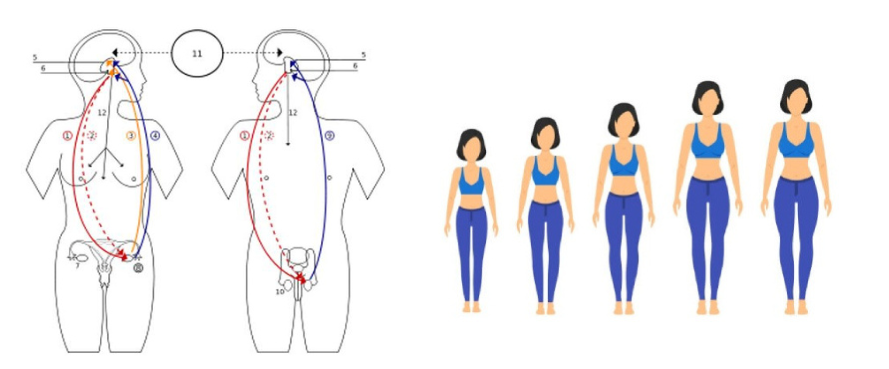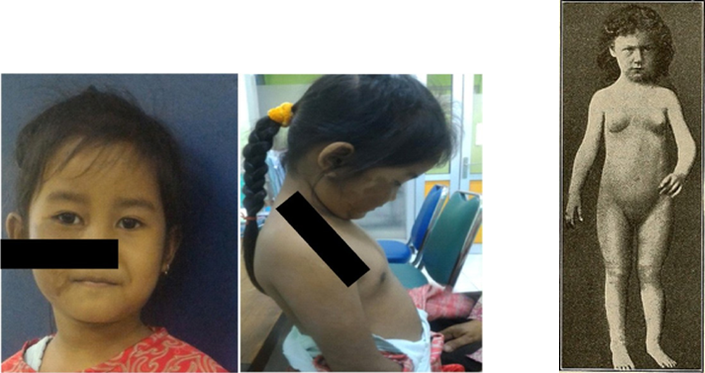

Puberty is the name for when your body begins to develop and change. During puberty, your body will grow faster than any other time in your life, except for when you were an infant. Back then, your body was growing rapidly and you were learning new things — you'll be doing these things and much more during puberty.
It's desirable to comprehend about the adjustments that come alongside with puberty earlier than they happen, and it is virtually essential to understand that every person goes via it. No two ones are precisely alike. But one issue all adults have in frequent is they made it through puberty.

When your body reaches a certain age, your brain releases a special hormone that starts the changes of puberty. It's called gonadotropin-releasing hormone, or GnRH for short. When GnRH reaches the pituitary gland (a pea-shaped gland that sits just under the brain), this gland releases into the bloodstream two more puberty hormones: luteinizing hormone (LH for short) and follicle-stimulating hormone (FSH for short). Guys and girls have both of these hormones in their bodies. And depending on whether you're a guy or a girl, these hormones go to work on different parts of the body.
In girls, FSH and LH target the ovaries, which contain eggs that have been there since birth. The hormones stimulate the ovaries to begin producing another hormone called estrogen. Estrogen, along with FSH and LH, causes a girl's body to mature and prepares her for pregnancy.
So that's what's really happening during puberty — it's all these new chemicals moving around inside your body, turning you from a teen into an adult with grownup degrees of hormones..es..
The Tanner stages can serve as an excellent guide to the changes you can expect to see in your daughter. There are five stages of puberty for girls.
• Their breasts begin to bud, and their areolas (pigmented area around the nipple) enlarge.
• Scant pubic hair appears.
• Height increases by about 2¾ inches per year.
• Their breasts continue budding.
• Underarm hair begins to grow, and pubic hair continues to grow. Pubic hair is coarse, curly and in the shape of a triangle.
• A growth spurt of more than 3 inches per year occurs.
•Their skin becomes oilier, and acne develops.
• Their breasts continue growing, and their nipples start to protrude.
• Pubic hair is still in a triangle, and there are now too many hairs to count.
• Growth may continue at the rate of about 2¾ inches per year.
• Problems with acne may continue.
• Periods (menstruation) typically start around age 12 (usually around the same age their mother’s and sisters’ periods began). Some girls, especially those with disordered eating, start later.

MedDoctors Are A Medical And Health Department Provider Institutions. Suitable For Healthcare, Medical, Doctor, Dental, Dentist, Pharmacy, Health And Any Related Medical Care Field.
Precocious puberty is when the signs of puberty in girls appear early, before The specified time for conventional puberty (before the age of 7 or 8).
It can be hard for some girls and sometimes is a sign of a health problem.
In girls, signs of precocious puberty include:
• Breast development before age 7 or 8
• Start of menstruation (her period) before age 10
• Rapid height growth (a growth spurt) before age 7 or 8
Some of these can be signs of possible early puberty, but sometimes are normal:
• Pubic, underarm, or facial hair development.
• Voice deepening
• Acne
• Mature body odor

Causes of precocious puberty
The onset of puberty is normally triggered by the hypothalamus. This area of the brain signals the pituitary gland (a pea-sized gland near the base of the brain) to release hormones that stimulate the ovaries (in girls) or testicles (in boys) to make sex hormones.
Most commonly, especially in girls, precocious puberty is due to the brain sending signals earlier than it should. There is no other underlying medical problem or trigger. This also can often run in families.
Less often, precocious puberty stems from a more serious problem, such as a tumor or trauma. Thyroid or ovarian problems also can trigger early puberty. In these cases, other symptoms usually happen that point to a more serious problem.
Precocious puberty is less common in boys, and more likely to be related to another medical problem. For about 5% of boys, the condition is inherited.
Some very young girls (usually from 6 months to 3 years old) may show breast development that later disappears or may last but without other physical changes of puberty. This is called premature thelarche (thee-LAR-kee) and usually doesn't cause lasting problems.
Similarly, some girls and boys may have early growth of pubic and/or underarm hair or body odor that isn't related to other changes in sexual development. This is called premature adrenarche (ah-druh-NAR-kee).
These kids may need to see their doctor to rule out "true" precocious puberty. But most need no treatment and will show the other expected signs of puberty at the usual age.

If your child has precocious puberty, the doctor may refer you to a pediatric endocrinologist (a doctor who specializes in growth and hormonal disorders in children) for treatment.
The treatment goals are to: stop or even reverse sexual development stop the rapid growth and bone maturation that can lead to adult short stature or an early start to periods Depending upon the cause, there are two possible approaches to treatment: treating the underlying cause or disease lowering the high levels of sex hormones with medicine to stop sexual development Sometimes, treatment of a related health problem can stop the precocious puberty.
But in most cases, there's no other disease, so treatment usually involves hormone therapy to stop sexual development.
The currently approved hormone treatment is with drugs called LHRH analogs. These synthetic (man- made) hormones block the body's production of the sex hormones that cause early puberty. Positive results usually are seen within a year of starting treatment. LHRH analogs are generally safe and usually cause no side effects in kids.
Puberty that happens late is called delayed puberty. This means a child's physical signs of sexual maturity don’t appear by age 12 or 13 in girls, This includes breast or testicle growth, pubic hair, and voice changes. These are known as secondary sexual characteristics.
Delayed puberty most often has no known cause. In some cases, it may run in families. In other cases, it may be caused by any of these: Chromosomal problems Genetic disorder Chronic illness Tumors of the pituitary gland or hypothalamus Underactive pituitary gland (hypopituitarism) Underactive thyroid (hypothyroidism) Abnormal development of the reproductive system Inability of the body to use androgen hormones (complete androgen insensitivity syndrome) Too much exercise Severe lack of eating (anorexia)

The symptoms are a lack of secondary sexual characteristics. Common signs in girls can include: • No breast growth by age 12 • More than 5 years between first breast growth and first menstrual period • No menstrual period by age 15 Your child's healthcare provider will consider his or her age, overall health, and other factors when advising treatment. Treatment for delayed puberty depends on the cause of the problem. In many cases, when the cause is treated, puberty proceeds normally. If the delayed puberty is inherited, no treatment is usually needed. In some cases, treatment may be done with hormone therapy. This helps to cause secondary sexual characteristics to occur. In other cases, surgery may be done to correct a physical problem.
In addition to a complete health history and physical exam, diagnosis of delayed puberty may include:
Blood tests. These are done to check hormone levels, look for chromosomal problems, and check for chronic disorders that may delay puberty. These may include diabetes or anemia. X-ray. This test uses a small amount of radiation to make images of tissues inside the body. An X-ray may be done of the left hand and wrist. This can estimate your child's bone age.
CT scan. This test uses a series of X-rays and a computer to make detailed images of the body. A CT scan can show bones, muscles, fat, and organs. CT scans are more detailed than regular X-rays. MRI. This test uses a large magnets and a computer to make detailed images of tissues in the body.
Your child's healthcare provider will consider his or her age, overall health, and other factors when advising treatment. Treatment for delayed puberty depends on the cause of the problem. In many cases, when the cause is treated, puberty proceeds normally. If the delayed puberty is inherited, no treatment is usually needed. In some cases, treatment may be done with hormone therapy. This helps to cause secondary sexual characteristics to occur. In other cases, surgery may be done to correct a physical problem.